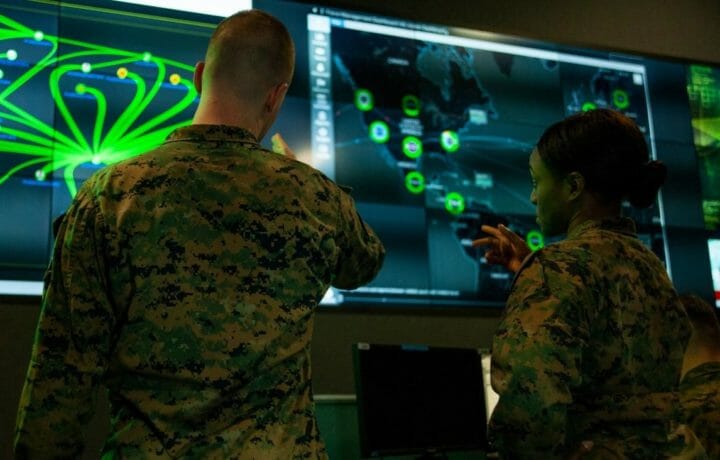We don’t see space satellites, but we depend on them every single day. Did your GPS give you directions? A satellite made it happen. Did you watch TV? Your connection may have arrived through satellite. Did you turn on the car radio for a weather update? Any alerts the announcer shared with you, they were based on satellite data. Life as we know it would turn upside down if harm were to fall to our invisible but absolutely essential network of satellites. And so the new U.S. Space Force is developing future-forward training that focuses on preparing its recruits to keep our satellites safe.
Training a Satellite Security Force
There are natural hazards that satellites in space have always needed to be guided away from—for example, intense solar flares that can fry their sensors. But in the near future, we’re going to also have to look out for new satellite-killing weapons: China has tested ground-based lasers capable of striking satellites up in orbit, for instance; and Russia deployed a satellite with a robotic arm capable of grabbing and maiming other satellites, including ours.
The Space Force, which has grown to 8,400 active-duty troops—now called “Guardians”—as of August, began putting its personnel through basic training last December. Recruits have been spending large blocks of training time in simulated satellite-steering exercises, where they identify key satellites that could be targets in a conflict and learn how to log into the satellites and drive them via remote-control away from the threats.
If in years to come we start outfitting satellites with weapons or defense systems of their own, future Guardians may train to activate and launch those features, too.
“The ability to mitigate a directed energy threat, if you will, whether it’s [radio frequency] energy, lasers, etc.—sometimes that’s maneuver, sometimes that’s repositioning, and sometimes that’s subsystem operation on the satellite itself to try to mitigate those capabilities,” said Lt. Gen. Chance Saltzman, the Space Force’s deputy chief of space operations, nuclear, and cyber, last month at a Mitchell Institute for Aerospace Studies event.
Known Unknowns
Saltzman didn’t say specifically what kind of “subsystem operation” a satellite might deploy when it’s under attack. That’s because military leaders don’t yet know exactly what sorts of attack a satellite might face, or what specific onboard systems it might use. That’s inevitable when we’re trying to plan for a future war in an environment (space) we have never fought in, and the weapons and vehicles involved will be like none we have ever seen. No one really knows just what we will be up against, or how we will fight against it.
But Space Force planners are working out possible answers, guided by threat-assessment reports from the intelligence community that spell out our adversaries’ space-warfare capabilities and what they could do to our spacecraft up in space. Using this intel, the planners craft computer simulations that model how an enemy attack on one of our satellites might unfold. Just as important, the simulations model what response actions the satellite operators could take, or what hardware or software the engineers could install on the satellite ahead of time, to defend it from the attack.
Saltzman told his audience that there are “a number of tactics that we’ve currently developed and, I would project, there are a lot we have yet to develop… And so as we build out the modeling and sim capability to really put our tactics to the test, then we’ll be able to lean more on the operators to employ those tactics should they need to mitigate a threat.”
Continued Learning
Technology evolves fast. Ask any civilian IT professional. They’ll tell you how real the struggle is to keep up-to-date on all the new software. And they’ll probably tell you they enroll in new training courses again and again throughout their careers to help keep their knowledge fresh.
Military space technology is no different. Long after the computer-simulation sessions of basic training, full-fledged Space Force Guardians will rotate out periodically and leave their assigned duty stations to enroll in follow-up stints of training. These new training programs will hone in on more advanced concepts and practices that they will need to know.
“Whether it’s missile warning or precision, navigation, timing, military satellite communications— all of that doesn’t stop. None of it stops,” said Saltzman.
Gearing up for Space War
The first war in space hasn’t happened yet, and no one knows for sure what weapons forces will use. So the new U.S. Space Force faces an early beginners’ challenge: How, exactly, do we train our recruits for such a war? It’s formulating answers as best as it can, following the intelligence and testing it through computer models. And it’s prepping its recruits to use what it knows while being adaptable and prepared enough to navigate the unknown.



